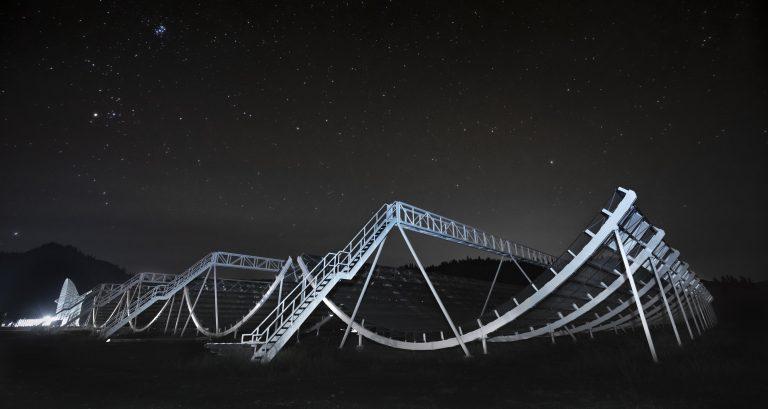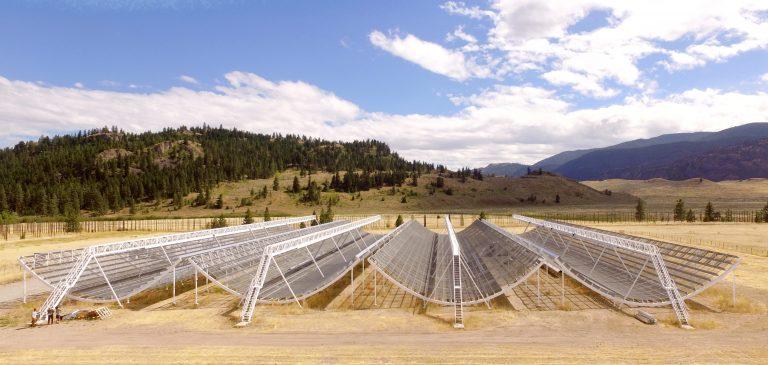SKA pathfinder telescope CHIME detects second repeating fast radio burst CHIME at night

FRBs are short bursts of radio waves coming from far outside our Milky Way galaxy. Scientists believe they emanate from powerful astrophysical phenomena billions of light years away, but their exact origin is unknown.
The repeating FRB was one of a total of 13 bursts detected over a period of just three weeks during the summer of 2018, while CHIME was in its pre-commissioning phase and running at only a fraction of its full capacity. Additional bursts from the repeating FRB were detected in following weeks.
The discovery is among the first eagerly awaited results from the revolutionary radio telescope, located at the Dominion Radio Astrophysical Observatory (DRAO) in British Columbia.
The results were published today in two papers in Nature, and also presented at the American Astronomical Society meeting in Seattle.
CHIME was granted SKA pathfinder status last year, joining a group of facilities all over the world involved in SKA-related science and technology studies, which provide vital input for the teams developing the SKA. While precursor telescopes are located at the future SKA sites, pathfinders are dotted around the globe.
“This is a very promising development from our newest pathfinder – we knew CHIME had great potential in the FRB field and these results so early in its operations demonstrate its powerful capabilities,” said SKA Organisation Director-General Prof. Philip Diamond.
“Last year there were also exciting FRB discoveries from the SKA precursor telescope ASKAP in Australia,” Prof. Diamond added. “With the MeerKAT precursor telescope now fully operational in South Africa as well, our capacity for determining where these FRBs are in the Universe has never been stronger.
“All this exciting science from precursor and pathfinder facilities gives us a glimpse of what will be possible with the SKA in the coming years, when we hope to be able to locate thousands of FRBs and use them to deepen our understanding of cosmology.”
Read the full press release from CHIME here.
Read the CHIME team’s papers in Nature (subscription required):
“Observations of fast radio bursts at frequencies down to 400 megahertz”





